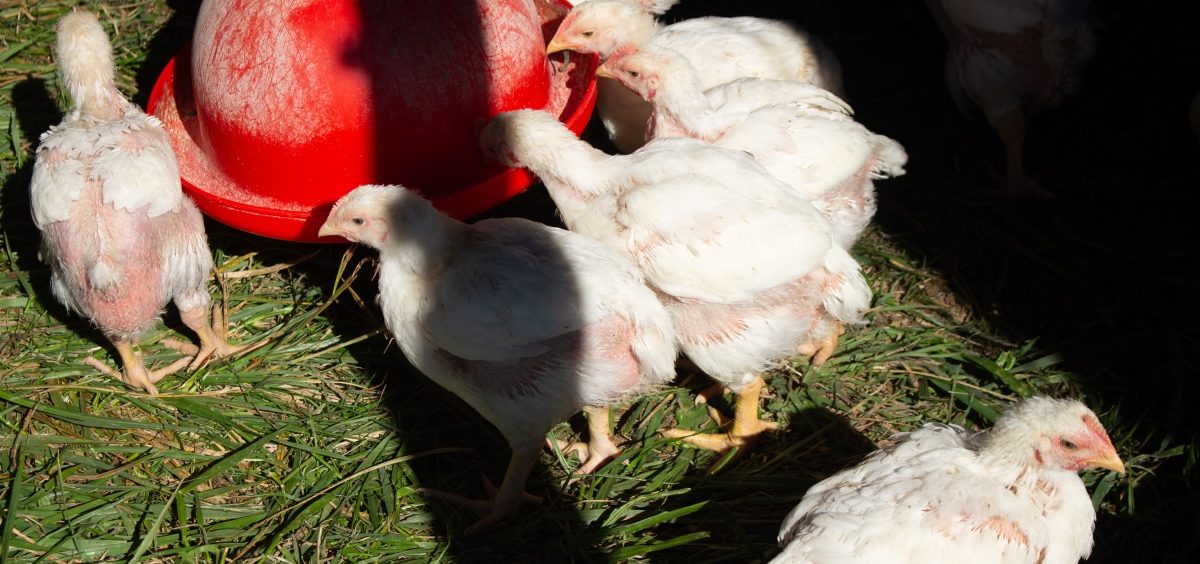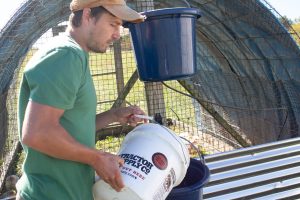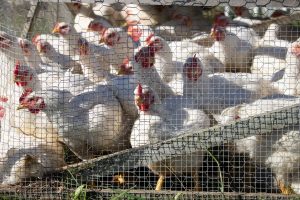News

Small farmers and food bankers hope Congress doesn’t forget the Local Food Purchasing Assistance program
By: Theo Peck-Suzuki | Report for America
Posted on:
LOGAN, Ohio (WOUB/Report for America) — Although his last name might suggest otherwise, Steven Fowler of Pasture Fowler has not been farming chickens for that long.
“I’ve been on this farm for two years in December, and then prior to that — Pasture Fowler is about four years old, and I leased land before that,” Fowler said.
Fowler’s chickens are pasture-raised, meaning they grow up with grass at their feet. They live in covered enclosures, which Fowler moves every day to keep their grass supply fresh. Once they’re fully grown, he takes them in batches of about 500 to a USDA-certified meat processor to have them slaughtered and turned into food products (what Fowler calls their “one bad day”), which he then sells.

Here’s how it works: The USDA gives money to food banks and other organizations so they can buy directly from local growers (the exact process varies from state to state). These purchasing contracts are a relatively reliable source of income for farmers, which Fowler said is particularly important for newcomers who aren’t sure how to move their product. He said having an Ohio CAN contract meant he could spend less time on sales and more time on production.
“That was a huge relief,” he said.
However, despite its popularity, the program’s future is uncertain. The yearlong delay in passing a new farm bill has put the program’s funding under strain: on Oct. 1, the USDA announced the injection additional funds through the Commodity Credit Corporation to keep it afloat for the next few months. On top of that, the version of the farm bill in the House of Representatives does not currently include the program at all.
“If it goes away, it just goes away,” said Milo Petruziello of the Ohio Ecological Food and Farming Association. “This actually represents a pretty significant hit to a lot of small and mid-sized Ohio food businesses.”

“We’re talking about fresh fruits and vegetables, a variety of proteins, local dairy,” said Ohio Association of Foodbanks executive director Joree Novotny. “Really hyper-locally grown, super high-quality products.”
Adam Blaney of Blaney Family Farms is one local farmer growing those products. His salad greens are a familiar sight to many at the Athens Farmers Market, but Blaney is well-aware that his produce is often too expensive for people facing food insecurity. He said that’s a problem he and other local farmers talk about frequently.
“I know what it costs to produce good-quality, organic, nutrient-dense food, because that’s what we do for a living,” Blaney said. “But I recognize that a lot of people who live on the incomes that they live on in this area can’t afford to buy that food.”
Blaney said his produce is more expensive because he has to factor in that actual cost. The prices people see at the grocery store might not, he added.
“We’ve been conditioned to know that food costs an ‘x’ amount, and usually it’s cheap because it’s been produced industrially somewhere else and trucked here,” he said.
Blaney said the sticker prices of those goods are sometimes lowered through things we don’t see with our naked eye: for example, commodity crop subsidies, low-wage labor and chemicals that save time but create health and environmental hazards (though he stressed this doesn’t apply to every product or company). Those add a cost somewhere, just not to the grocery bill.
For Blaney, this price discrepancy is what makes the program so important.
“It gets the food that I want people to have in the hands of people who can’t always afford to buy it,” he said.
Novotny said she’s spoken with legislators on both sides of the aisle who want to see it continue.
“We understand that there is broad bicameral, bipartisan support for permanently funding that program, or a program like it in the farm bill, eventually,” she said.
Ohio has two representatives on the House Agriculture Committee: Republican Max Miller and Democrat Shontel Brown. Novotny said both are in support of the program. The Democratic farm bill proposal in the Senate also includes the program. The Senate version of the bill has not yet left committee.
“I think it’s more a matter of fine-tuning the details,” Novotny said.
For his part, Fowler hopes the program continues so that it helps others the way it helped him.
“If I get phased out and it starts to go to new farmers … I think that would be really pivotal,” he said.
To him, it’s all about unlocking the enormous potential of small farms.
“I think the economics of someone in my generation owning 50 plus acres is gone,” he said. “So I think what that means is a lot of people are going to be able to have farms that are 10 acres, or five acres … I think all of us can learn to do our niches in agriculture that we’re interested in and create a really beautiful food system.”

